Herbs and Their Yin and Yang Properties
In traditional Chinese medicine (TCM), physicians stress on the overall balance of patients, the remedies are designed to work on the whole body instead of specific systems. With this holistic approach, physicians always pay attention to the general properties of herbs such as the "natures", "flavors" and "movements," so as to help them prescribe remedies that match the therapeutic nature with diagnosed disharmony patterns. The yin and yang theory are used in categorized the herbal properties and as a basic guideline in herbal applications. Generally, cold and cool nature herbs belong to yin, while hot and warm herbs belong to yang. Yin herbs have flavors like sour, bitter and salty, while yang herbs have flavors like sweet and pungent. Herbs with floating or ascending quality are part of yang, while herbs with sinking or descending quality are part of yin.
| Herb Properties |
Yin Category |
Yang Category |
| The four natures and associated therapeutic actions |
Cold and cool: clear heat, purge fire and detoxify |
Hot and warm: warm up the internal body, expel coldness and promote physiological functions |
| The five flavors and associated therapeutic actions |
Sour: astringency and consolidation. Sour herbs are often used to treat conditions with sweating, cough, diarrhea, emission, incontinence, and heavy menses.
Bitter: purge fire, dry dampness, promote bowel movements, and rectify qi movement. Bitter herbs are often used to treat conditions with fever, heat signs, asthma and cough, vomiting, hiccup, constipation, qi stagnation, abdominal mass, and conditions due to excessive dampness or virtual fire.
Salty: dissipate accumulations, soften hardness and purgation. Salty herbs are often used to treat constipation, abnormal growths and accumulations. |
Pungent: promote distributions and circulations, enhance qi and blood activities. Generally, pungent herbs are used to treat conditions in the superficial portion of the body and also blood or qi stagnation.
Sweet: lubricate and nourish the body, neutralize toxic effects, slow down acute reactions and arrest pain. Sweet herbs are often used to treat general weakness, spleen and stomach disharmony and painful conditions. Some herbs can also induces urination and expel dampness out of the body, such as poria, polyporus and coix seed. |
| The four movements and associated therapeutic actions |
Sinking and descending: promote downward and inward movements. The herbs are often used in clearing heat, purgation, calming, stabilizing actions in the upper body, soothing abnormal qi movements (e.g. hiccup, vomiting and cough), arresting excessive discharges. |
Floating and ascending: promote upward and outward movements. The herbs are often used in uplifting yang qi (e.g. to prevent organ prolapse), distributing, dispersing, inducing vomit, and opening up orifices. |
When choosing herbs for treatment, it is essential to first identify the disharmony pattern and then select herbs with the appropriate natures, flavors and movements. For example, herbs like golden thread rhizome, honeysuckle flower and Chinese gentian root have a cold property; they have cooling and purgative effects which can be used in yang excess conditions. Fleeceflower root has sweet and warm properties, it can nourish yin and promote blood production; while rehmannia root has sweet and cool properties, it can cool blood and nourish yin, the two herbs are commonly used in yin deficient conditions.
By following these simple steps, TCM can help maintain the body's balance and health.
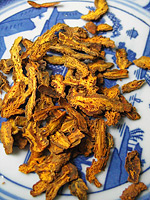 |
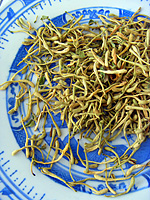 |
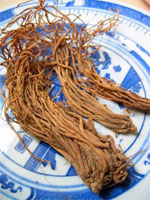 |
| Golden thread rhizome is bitter and cold in property |
honeysuckle flower is sweet and cold in property |
Chinese gentian root is bitter and cold in property
|
| |
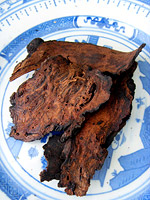 |
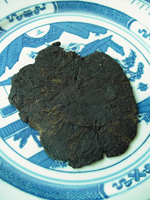 |
| Fleeceflower root is bitter and mild warm in property |
Rehmannia root has both bitter and sweet flavors, and is cold in nature |
References
1. Beijing University of TCM (edited), Basic Theories of Traditional Chinese Medicine, Academy Press, 1998.
2. Li Qizhong (edited & complied), Elaboration of TCM Basic Theories, Publishing House of Shanghai Traditional Chinese Medicine University, 2006.
3. Qin Bowei (compiled), Elementary Chinese Medicine, People's Medical Publishing House, 2006.
4. Fang Yaozhong (compiled), Plain Speeches on TCM Basic Theories, People's Medical Publishing House, 2007.
|